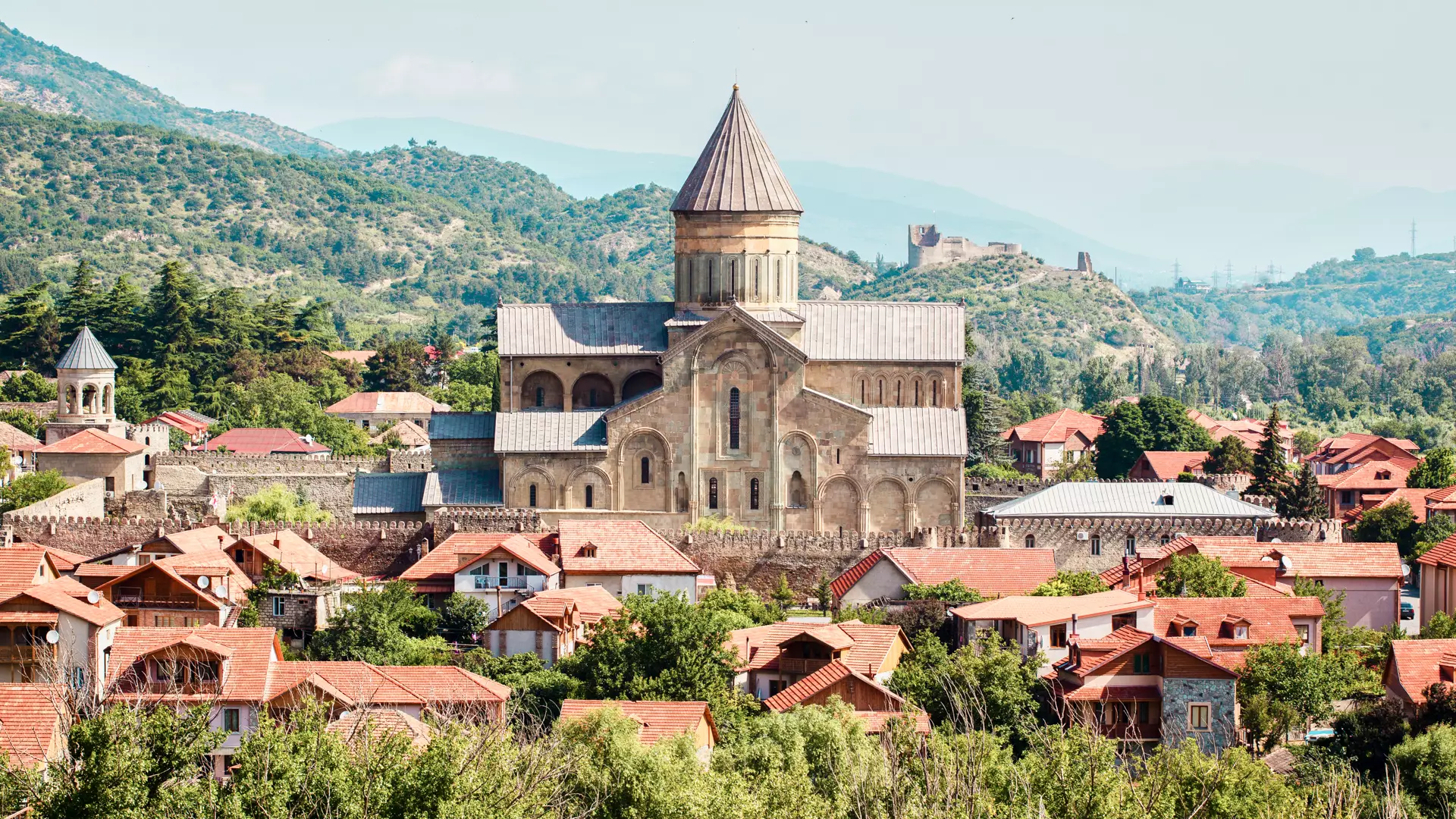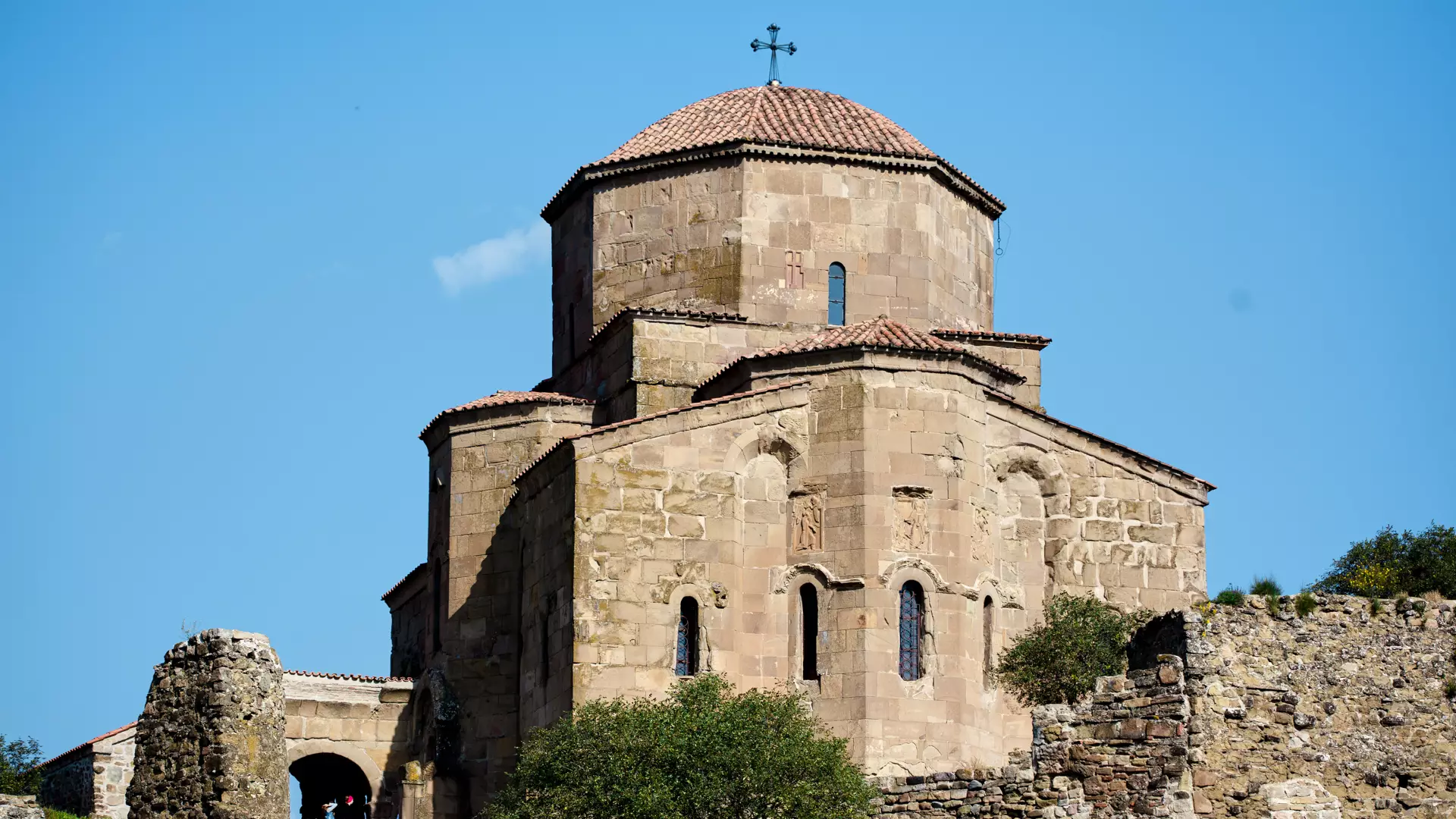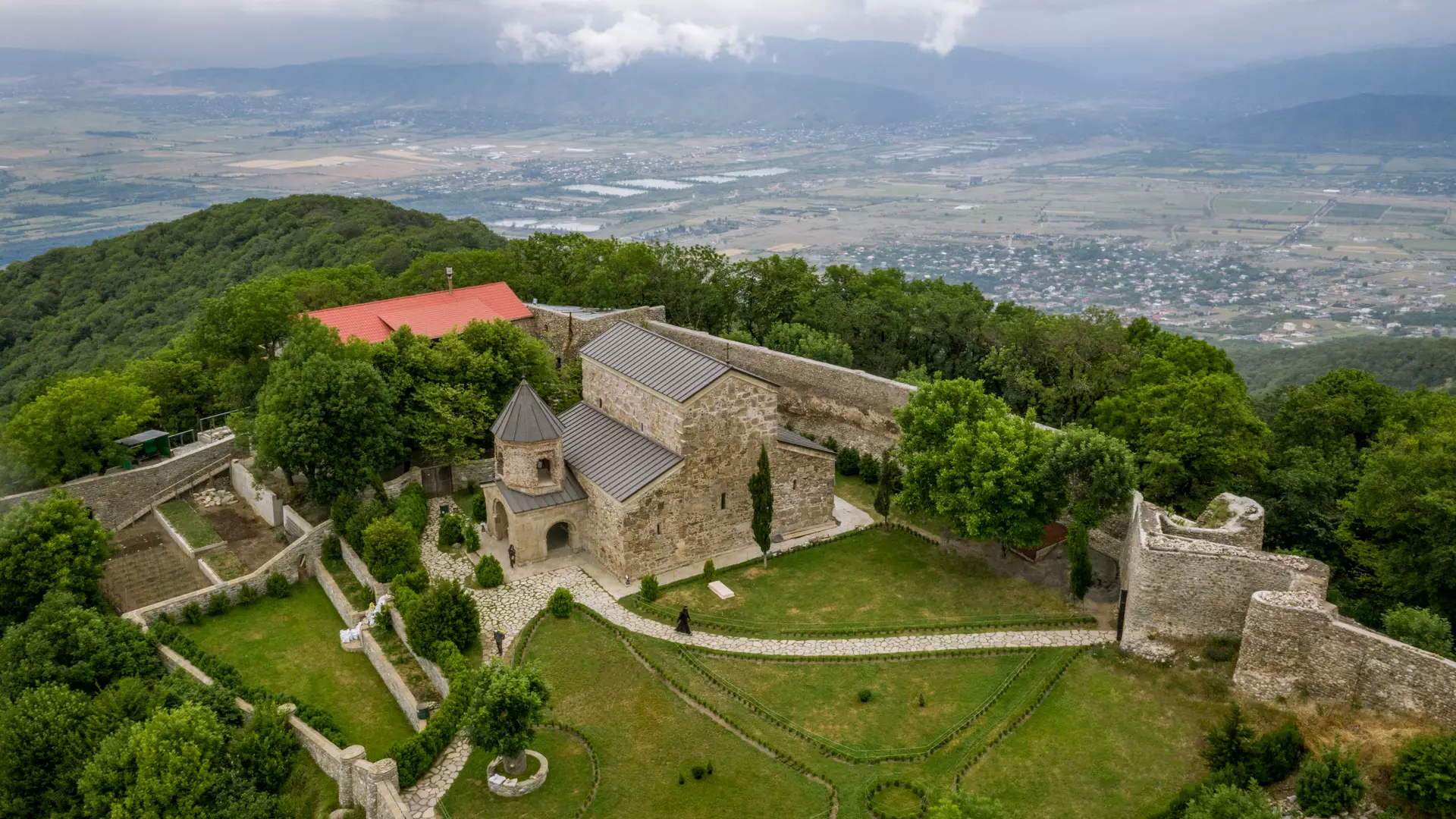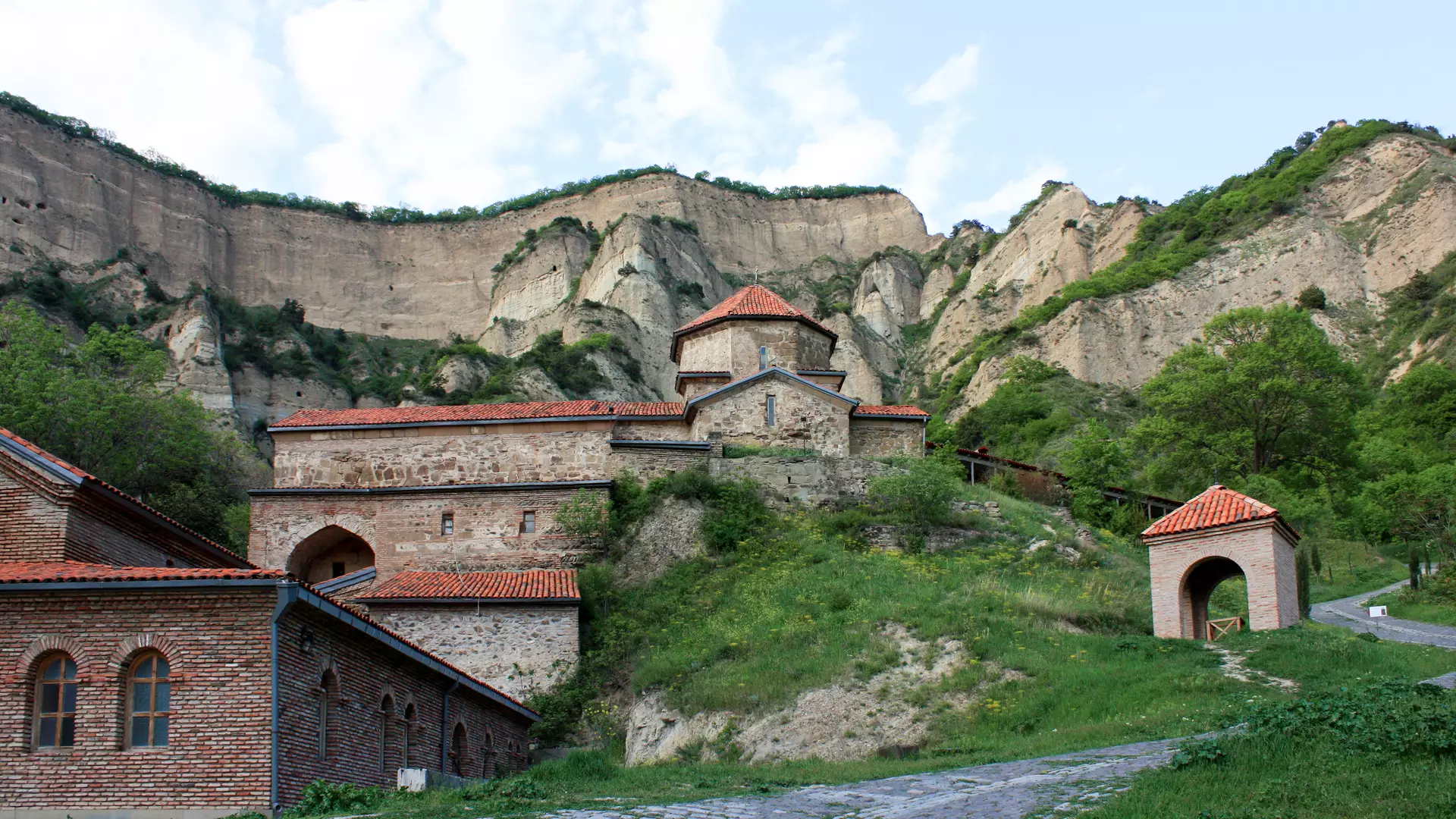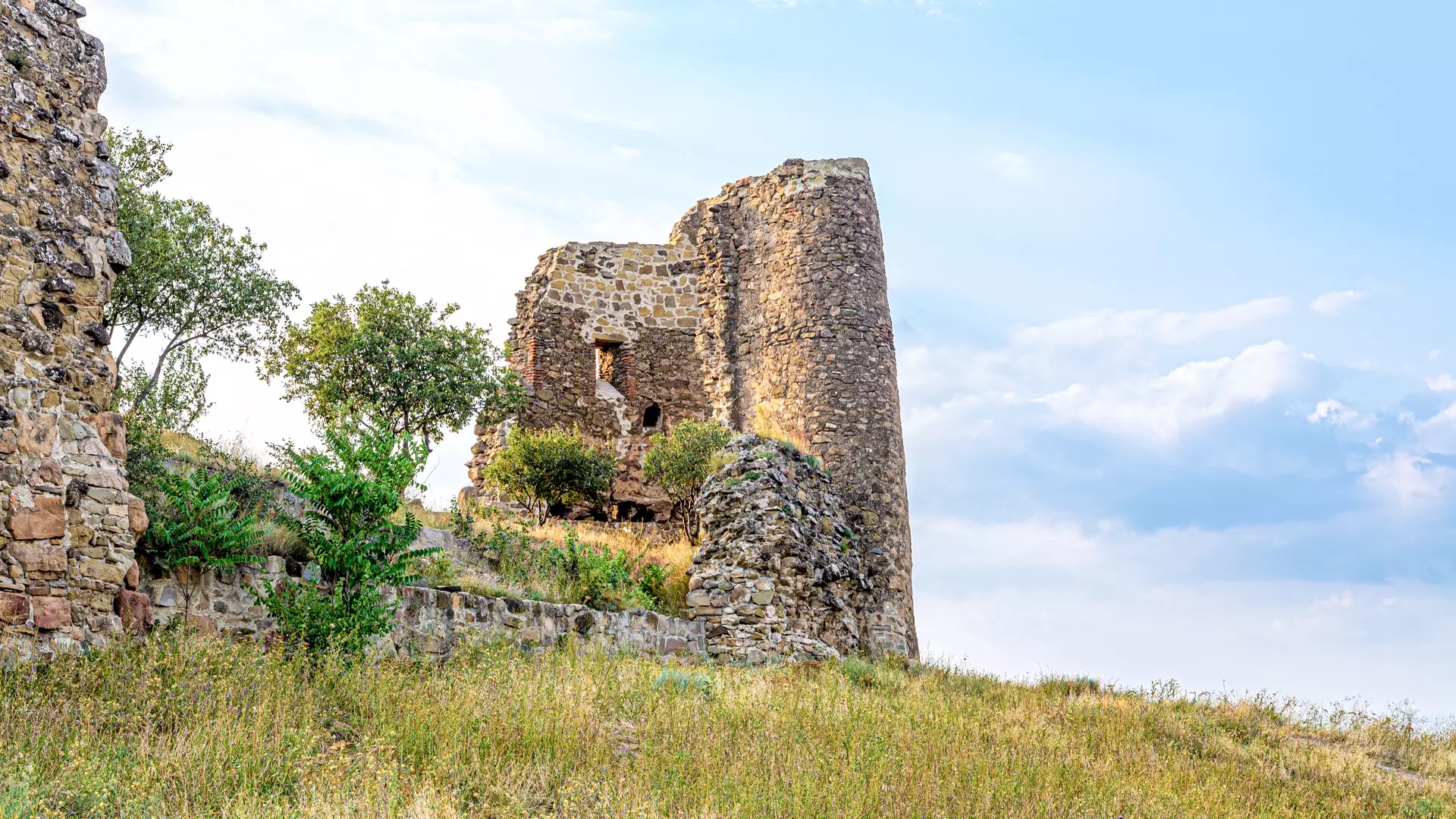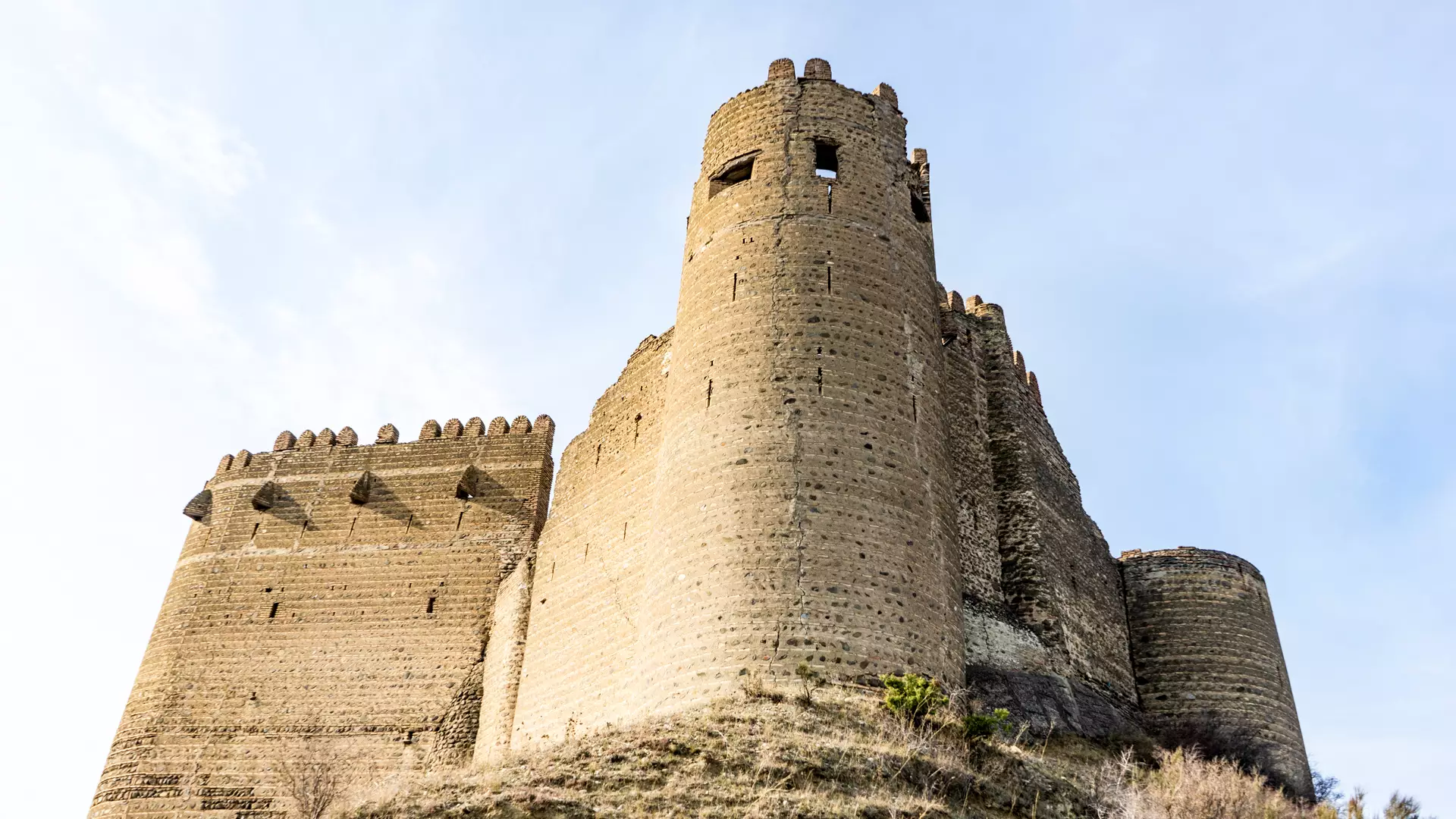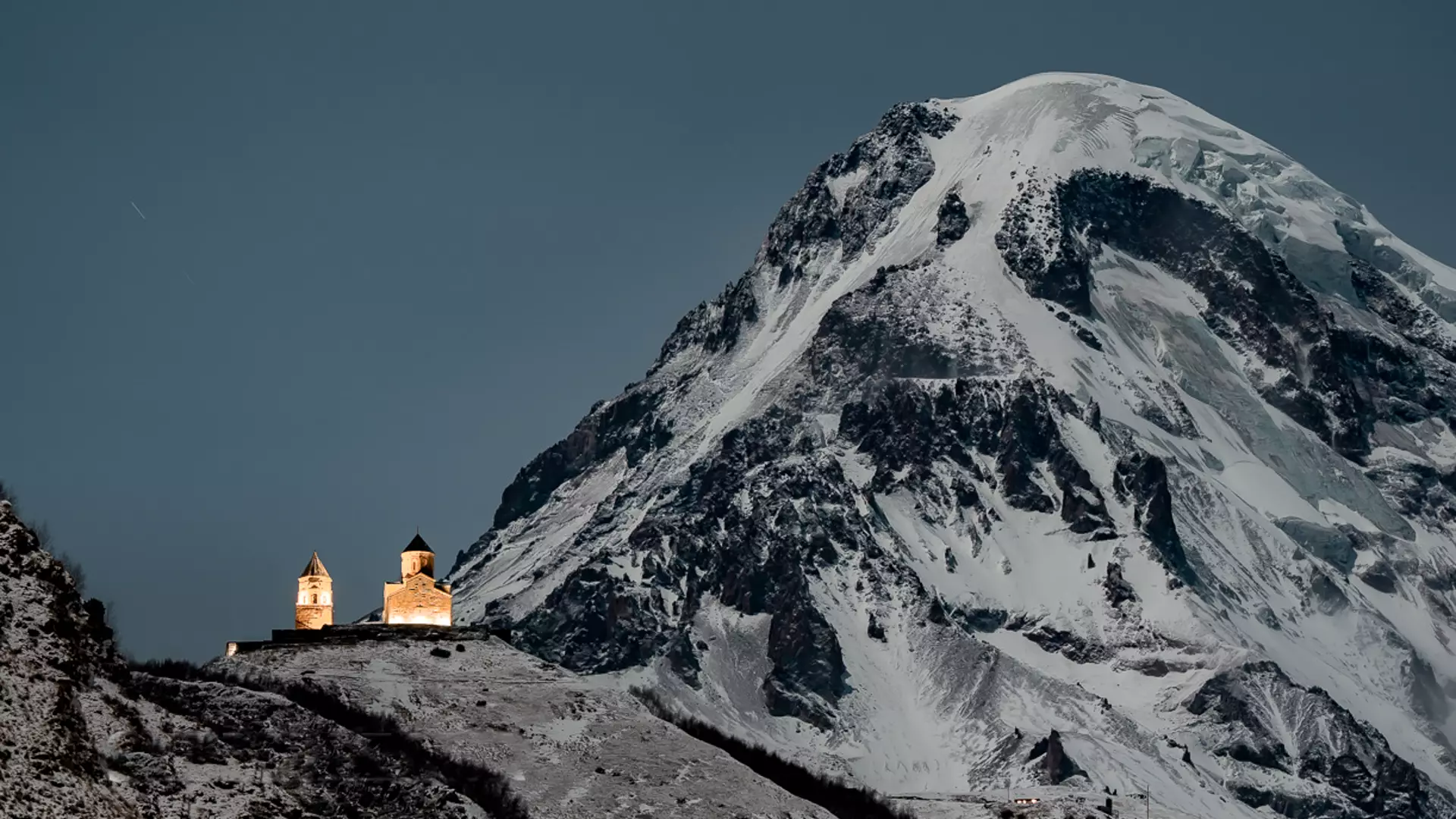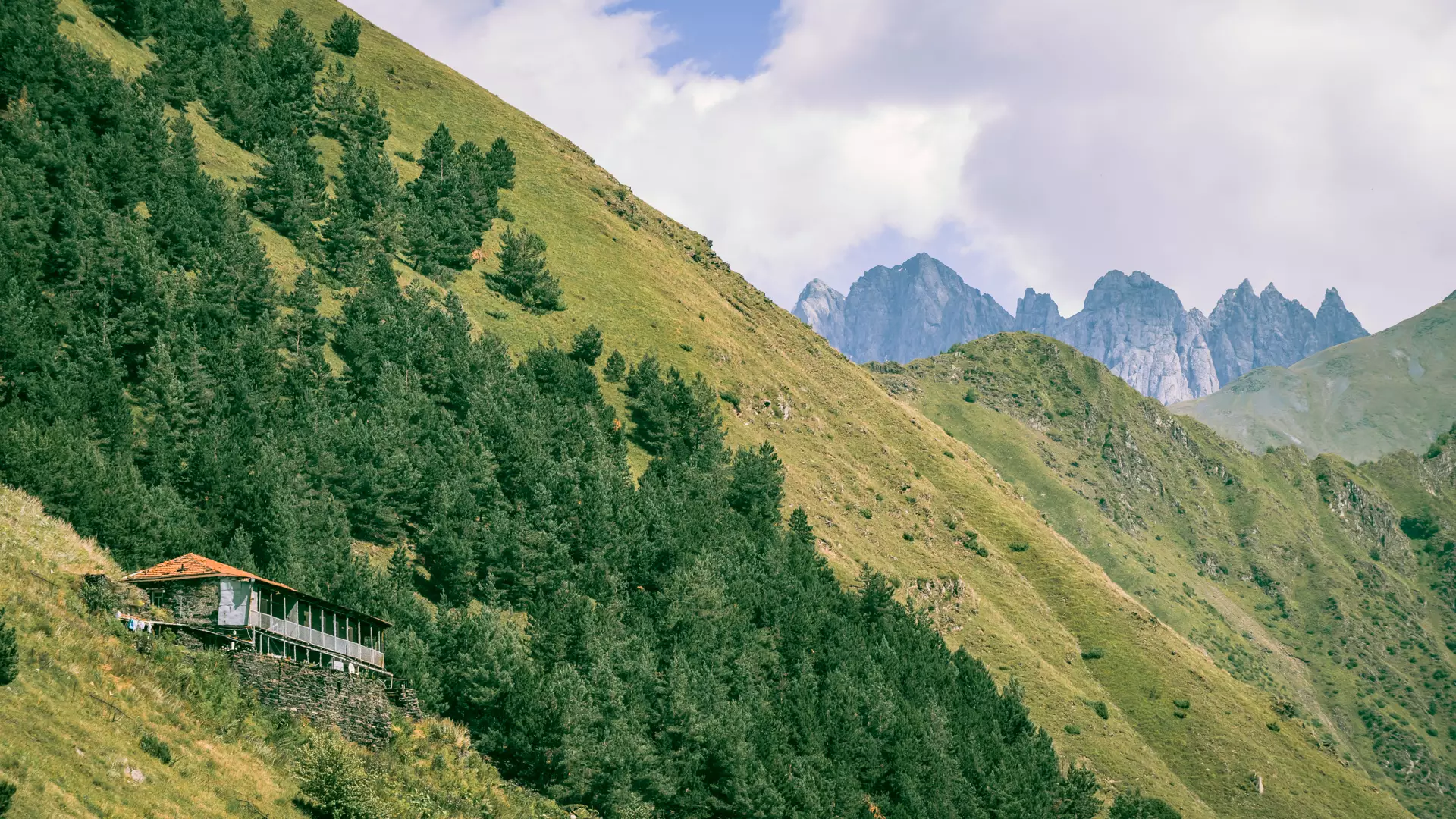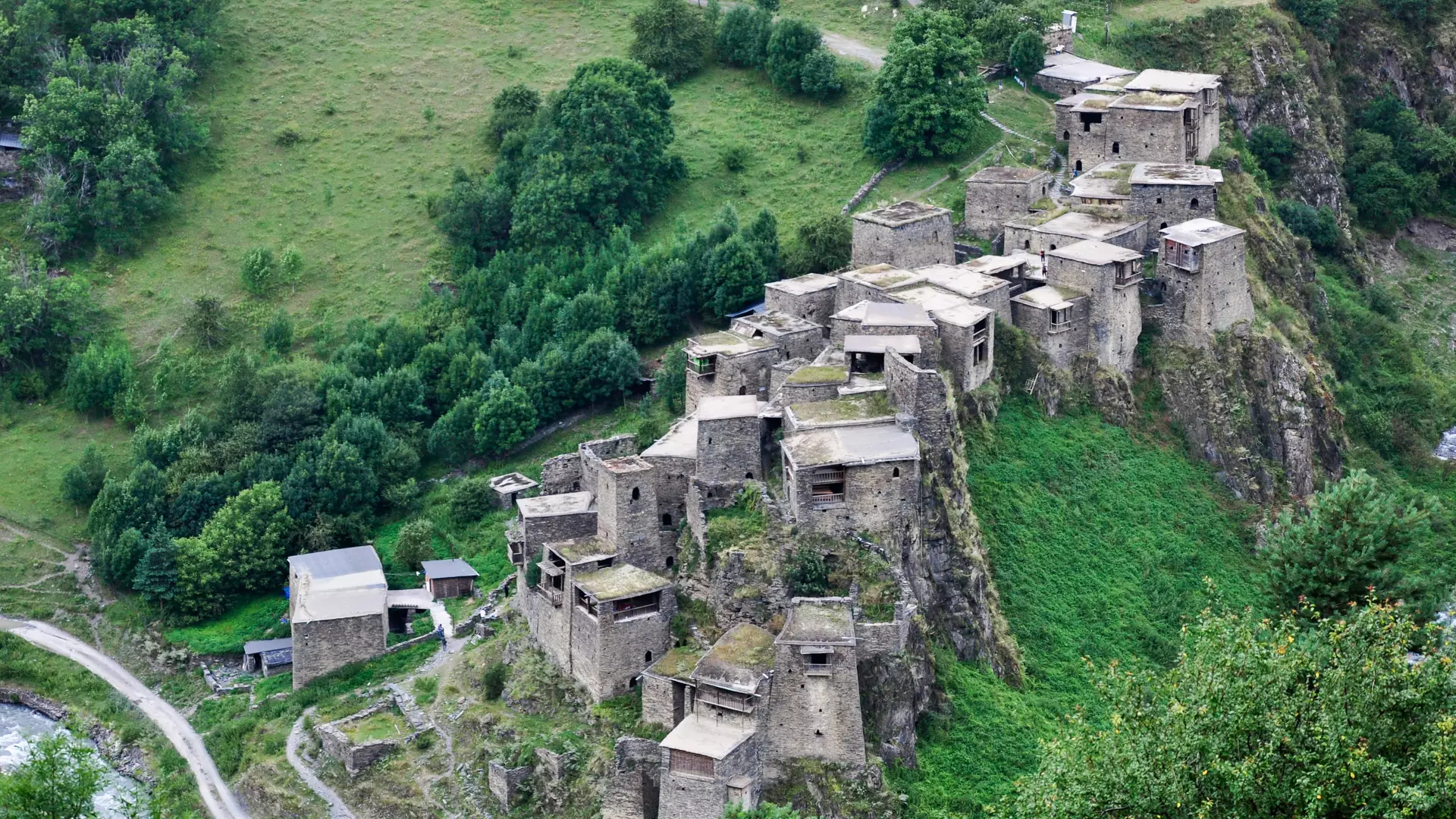9 Amazing Sights in Mtskheta-Mtianeti
However, first and foremost, Mtskheta-Mtianeti is famous for the extremely important, ancient, historical and cultural monuments of Georgia that are in it.
The administrative center or major city of this region is Mtskheta, the capital of the ancient kingdom of Kartli (also known as the kingdom of Iberia, as it was named in sources from Antiquity and Byzantium), for a period of 800 years, starting in the 3rd century BCE.
It can be said without exaggeration that the sights of Mtskheta, such as the settlements from the early Bronze Age, grand cathedrals built centuries ago, and mighty fortresses, will make an impression of the rich culture of our country.
Today, Mtskheta is a city-museum that comes alive for travelers and tourists. It is unimaginable that you should be in Georgia and not visit the ancient capital of the kingdom of Kartli and it is surroundings, only 20 kilometers away from Tbilisi.
Svetitskhoveli Cathedral
Svetitskhoveli is the main cathedral of Georgian Orthodoxy and is an extremely important place for every Georgian.
This grand structure was constructed in the 11th century, from 1010 to 1029, in the same place as a small 4th-century church built by the first Christian king of Georgia, Mirian.
Svetitskhoveli is one of the largest churches in Georgia, having survived through many centuries to reach us today. The church is 50 meters tall and has a grandiose interior.
No other monument has as many legends about it as Svetitskhoveli does, including ones about its location, name, construction process, and the holy relics kept there.
According to one legend, it is under Svetitskhoveli that one of the major relics of Orthodox Christianity is buried – the tunic of Christ. Invaders of Georgia have often attacked the church to get their hands on the tunic, which they needed to improve their political clout, but none of them could ever get it. It is also said that the tunic will only appear when the end times are near.
But no less impressive than the legends is the architectural artistry of Svetitskhoveli, the ornamentation of the church, and its bas-reliefs, including the right hand of a person depicted on the northern façade, holding a carpenter’s square for working stone, with an inscription underneath saying the surname of the church’s architect, Arsukidze.
The cathedral is surrounded by a grandiose, two-tiered wall, with military walkways and embrasures. There is a museum located in an 18th-century building in the southeast corner of the wall.
Svetitskhoveli has been inscribed on UNESCO’s list of World Heritage Monuments.
Jvari Monastery
On social networking sites there are often scenes like the following with the #Mtskheta hashtag: people pose in front of the camera, behind them, there is a beautiful landscape as background, where, from a bird’s-eye view you can see how two differently-colored rivers join into one.
Those rivers are the Mtkvari and the Aragvi, as the city of Mtskheta was built right on top of the confluence of those two rivers, and the scene described above was taken from Jvari Monastery, built on top of a rocky mountain cliff, or, more specifically, from the viewing area in the monastery’s yard. From there all of Mtskheta and the confluence of the Mtkvari and the Aragvi can be see plain as day.
The Mtkvari River flows from Turkey, passing through all of Georgia to Azerbaijan, and then flowing into the Caspian Sea. For your information, the city of Tbilisi is built on the Mtkvari River.
The Aragvi, on the other hand, is a mountain river, clearer and cleaner. It has its source in Kazbegi and joins the Mtkvari River on the left side in Mtskheta.
The Georgian Military Highway follows the Aragvi River, being one of the most important arteries of the Caucasus, connecting Tbilisi with Stepantsminda.
From that very road you will definitely spot, and then won’t be able to take your eyes off of, Jvari Monastery, a church built in the 6th century, so harmoniously incorporated into the environment that you might believe it to be a natural continuation of the cliff. You must also see this spectacular monument of Georgian architecture up close, with its uniqueness having been also recognized by UNESCO, who put it on their list of World Heritage Monuments.
Everything about the Mtskheta Jvari Monastery is impressive – the architecture of the monastery itself, its ornamentation, the magical view, and the calm atmosphere. By all accounts, Mtskheta Jvari is a holy place. The monastery is in use, and many people climb up to that height to attend church services.
Zedazeni Monastery
This amazing monastery complex is outside of Mtskheta. Take a vehicular road up from the center of Saguramo Town and the complex will be on the top of Zedazeni Mountain, 1,350 meters above sea level. To get to the monastery you will have to take footpath leading through a forest. The way to Zedazeni is well-known for its exceptional views. From there you can see Mtskheta, with Svetitskhoveli and Jvari Monastery, Saguramo, and the valleys of Mukhrani, and to the north there is the Caucasus Mountains and gray Mkinvartsveri, the valleys of the Aragvi and the Mtkvari, and also the Trialeti Range.
In Zedazeni you will see wooden tables and chairs for sitting. If you have to come here in the autumn, you will be surrounded by so many different shades of red and yellow that you will feel as though you are in a painting come to life.
In this place, that is, the peak of Zedazeni Mountain, there was, during the reign of King Parnavaz of Kartli (4th-3rd centuries BCE), a temple to the pre-Christian idol, Zaden, who was worshipped by many people. People coming to see the idol would have, presumably, been told the way from Mtskheta like so: There, to the northwest, on top of the mountain, is Zaden (the end of which sounds like “zeda zadeni” in Georgian). The phrase became shortened, and that is how the name Zedazeni came about.
When Georgia proclaimed Christianity officially (4th century), the idols were destroyed, including Zaden.
The foundation of the monastery near the location of the idol is associated with an Assyrian preacher, Father Ioane Zedazneli.
13 Assyrian fathers came to Georgia in the 6th century to strengthen Christianity and introduce monastic lifestyle to the locals, settling in various regions: Shio in a cave nearby Mtskheta, Davit in Gareji desert, Anton in Martkopi, Iase in Tsilkani, Ioseb in Alaverdi, and so on.
The churches founded by them and bearing their names are historical sights of Georgia.
Today you will find an entire monastery complex on Zedazeni, with buildings constructed at various times. The main church was built in the 8th century, and Ioane Zedazneli is buried within.
Shiomghvime
About nine kilometers to the west of the city of Mtskheta there is a large monastery complex in the Mtkvari River Valley.
Monastic life was brought to this place in the 6th century by the monk Shio, a student of the above-mentioned Ioane Zedazneli and one of the Assyrian preachers who came to Georgia as Christian missionaries.
Shiomghvime quickly became the largest monastery in Georgia, and by the end of the 6th century, more than 200 monks were living there. Cultural and religious life flourished. The royal court of Georgia patronized Shiomghvime Monastery throughout its existence.
Enemies invaded this place multiple times during the Middle Ages, and monastic life ended and began anew there multiple times, but it was finally closed by the Soviet authorities, although people say that church services were still held there in secret during the Soviet Union.
Now it is again a functioning monastery, attracting numerous worshippers and tourists.
In the middle of the monastery, you can see the cave where St. Shio spent the last two years of his life and where he is buried.
Later the entire monastery was called Shio’s Cave (“shios mghvime” in Georgian).
A paved road leads up to the monastery gate. Beyond that is a massive area with churches and various buildings, where you can only walk. The place is especially beautiful in spring and autumn.
At the entrance to Shiomghvime is a legendary place called “the Spring of Tears”. The water of the spring is said to work miracles and cure various diseases.
Armazi Fortress
Armazi was the highest pagan deity of the kingdom of Iberia, the lord of thunderstorms, rain, and plants, as well as the god of war. Worship of him died out after Christianity was proclaimed the state religion of Georgia (in the 430s), and only the names remained.
An extremely important fortress in terms of scale during the 13th to 15th centuries was built there on the right bank of the Mtkvari, atop a high mountain, in a nearly inaccessible place.
Armazi Fortress controlled to the roads leading to the countries on the other side of the Caucasus Mountains.
You cannot get to the fortress by car, instead you will have to follow a footpath up, and along the way you will come across a 4th-century basilica and a spring, soon after reaching the main fortress.
Basically, only ruins remain of the fortress today, scattered across 30 hectares, but even that is enough for you to imagine the original grandeur of the monument.
The place is in Mtskheta, about three kilometers away from the railway station.
Across from Armazi Fortress, on a slightly higher mountain, you will see the 12th-century St. Nino Church in the mystical village of Karsani, where there is a magical forest and the remains of a secret factory from the time of Stalin.
As for Armazi Fortress, there is another sight to see in Mtskheta with a similar name, and you should not confuse the two. In the southern part of Mtskheta is the unique archaeological monument, Armaztsikhe (Bagineti), a wonder of antiquity, the residence of the kings of Iberia, the Georgian acropolis, where cultural layers dating from the 4th-3rd centuries BCE to the 1st century CE and afterwards have been found.
Ksani Fortress
If you want to see how beautiful when you are off the tourist map locations of Georgia, then look no further than this place. About 20 to 22 kilometers from Mtskheta is the small, beautiful village of Tsikhisdziri and Sarkineti Mountain, with this medieval fortress on top of it. This is Ksani Fortress, a fortified structure from the 16th century, which looks out over the confluence of the Ksani and Mtkvari Rivers.
While traveling over the slopes of the high mountains of Georgia, you will often come across lone towers or ruins. More often than not, they were once a part of the defensive system of the surrounding area or the entire region.
That was what Ksani Fortress was for Ksani Valley, from there up to the slopes of the Caucasus Mountains, to Keli Lake, where the Ksani River has its source, the northern border of the Ksani Valley.
Ksani Fortress controlled a strategic crossroads, and the light on top of it was an alarm signal that would go out to dozens of towers and fortresses around.
Gergeti Trinity Church (Gergetis Sameba)
While traveling in Georgia, the historical Khevi province with the center in present-day Stepantsminda, will be a real discovery in the high mountains of the Mtskheta-Mtianeti Region.
It is in the city of Stepantsminda that you will see Gergetis Sameba, a domed church, on top of Gergeti Mountain, at an unusual height for such a monument, since it stands at 2,200 meters above sea level.
The church was built on the slopes of Mkinvartsveri, also known as Kazbegi Peak. If you pay attention, you will notice that Gergetis Sameba and Kazbegi are often depicted in photos and on souvenirs together.
Gergetis Sameba, according to historical sources and its architectural style, was built in the 14th century. We cannot say that it is an ancient church (like, for example, Jvari Monastery, which you will recall from the beginning of this blog), but Gergeti always played an important role in the cultural life of Khevi and had an important mission from the country. The church, located in a nearly inaccessible place, would hide valuable objects and holy relics from other Georgian churches in the Middle Ages, keeping them from destruction at the hands of enemies.
In the Soviet period, the church and the monastery within it were closed. Now the church is active again, and its doors are always open.
If you go up there, you should certainly take pictures with a background where the grand church and the white cap of Kazbegi can be seen.
Juta
Once you are already in Stepantsminda, you really should go see Juta.
Juta is a small, authentic village nearby Kazbegi. It is about 20 kilometers from Stepantsminda, most of which you can travel by car, then you leave your vehicle at a specially arranged parking area, after which you will walk up towards Juta, the last inhabited point in the Snostskali River valley. After Juta, there is only wilderness, Juta Waterfall, a lake, and the rocks of the Chiukhi (Chaukhi) Mountain.
Juta and those cliffs are just as much of an inseparable pair of the Mtskheta-Mtianeti Experience as Gergetis Sameba and Kazbegi. As is usual in that region, everyone and everything is friends with the mountain.
The place is a paradise for people who wander through nature and mountains. There are camping areas for staying the night in Juta, as well as a comfortable, modern hotel.
Shatili
This is the jewel of Khevsureti, a fortified city on a cliff, a candidate for UNESCO’s World Heritage list, the unique and inimitable Shatili!
Shatili is 1,400 meters above sea level, on the left bank of the Arghuni River, at the border of Georgia and the Chechnya region of Russia. The fortified village dates back to the Middle Ages.
The architecture of Shatili is amazingly impressive, a regular, well-thought-out development on an inaccessible cliff. Around 60 towers create a unified residential and defensive complex, protecting the northeastern region of the country.
The towers and domestic buildings have three or four or five stories, flat roofs, and are laid out across terraces. It is also planned in such a way that the if they were invaded, the people could move between the towers unseen, surreptitiously communicating with and taking care of the whole village.
That is why Shatili is called a brilliant monument of Georgian architectural art.
There are several family-run guesthouses in Shatili, where the locals will gladly host you and serve you delicious Khevsuretian khinkali and some beer.
Cookie Policy

